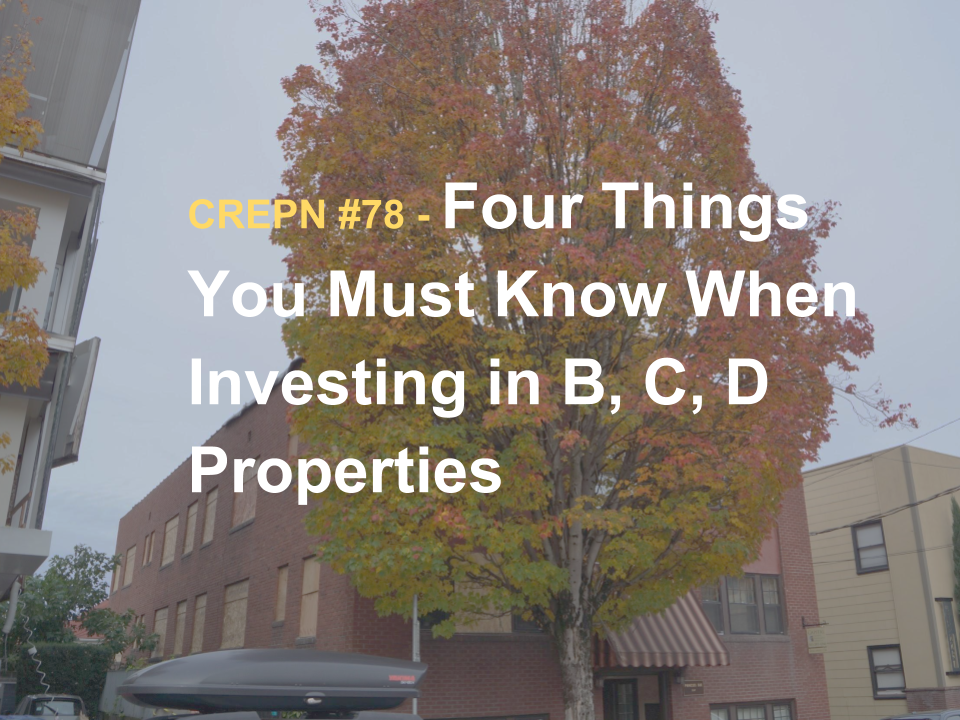
03 Feb CREPN #78 – How to Save on Insurance When Investing in B, C, D Properties
Real Estate Investors who chose B, C & D properties must know four things to save on insurance. [x_audio_embed][/x_audio_embed] Almost any insurance company will offer coverage for a newer class A property. This is because the risk of damage from a building system breaking is low. A class B property, it will be more than twenty years old and will have dated decor. The age of these properties coincides with the end of life expectancy of multiple critical building systems which need to be replaced. Systems that are not replaced present a higher probability of failure or breakage resulting in damage to the property. This increased likelihood of damage reduces the number of willing insurance companies to cover the property and in turn reduces the competition for your business which ultimately leads to higher cost of insurance. The Underwriters job is to screen the condition of the property for acceptability and to minimize the chance of paying an avoidable claim. The more current the building systems, the less likely a claim and the better the chance of acceptance and aggressive pricing from the insurance company.
How to Save on Insurance When Investing in B, C, D Properties
There are four systems that insurance carriers care most about and investors need to pay particular attention to: Roof – The roof is the first line of defense against rain and keeping water out of the structure. A roof in poor condition can leak and cause a host of problems like: stained drywall, paint, and the big bad mold, which is a health hazard. Electrical – The older the property, the more concerned you should be.- Electrical panel. If it still has fuses, know that your insurance companies prefer circuit breakers. NOTE: There were some electrical panels manufactured by Federal Pacific called, “stab lock”. These are known to be problematic, and will need to be replaced.
- Wiring: If the building contains knob and tube, or aluminum wiring, this is no longer acceptable.
- Amperage: The building was built for a specific load capacity. If the building was converted from gas appliances to electric, ie hot water, stove, furnace, and the electrical load design was not increased, there could be a problem of overload and be susceptible to fire.

